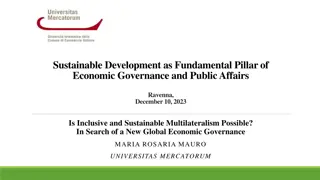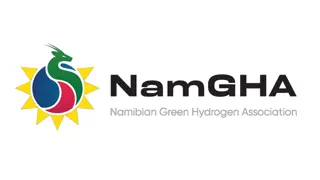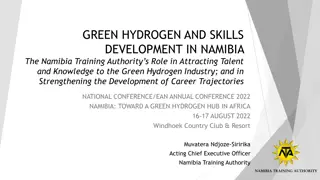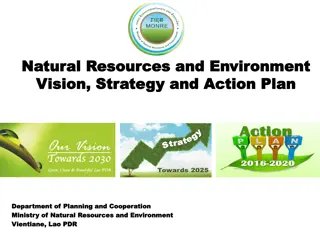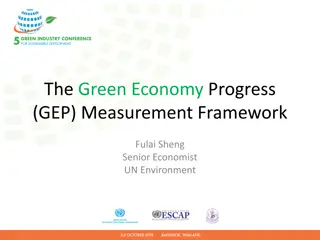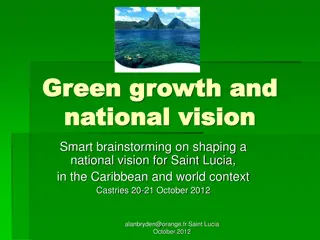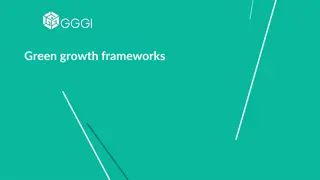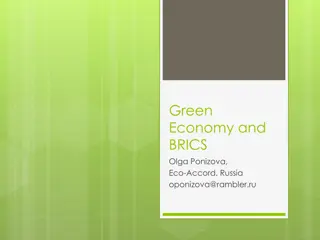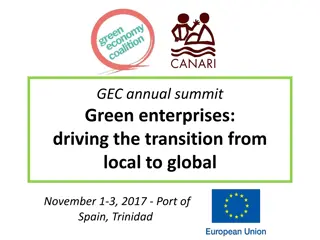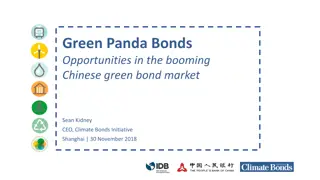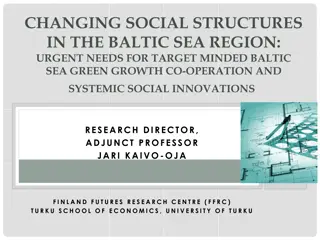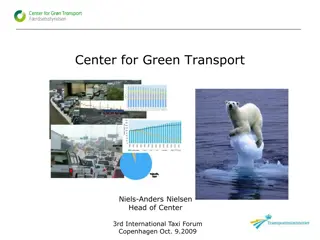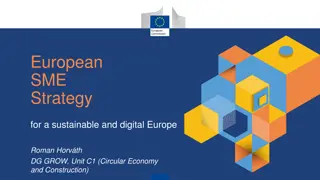Re-energising Europe's Global Green Reach: Strategies for Sustainable Growth
"Explore the urgency of EU's green external action, the shifting drivers, and the imperative for a clear global reach strategy. Discover insights on energy transition, increasing resource demands, and policy recommendations for a sustainable future."
Download Presentation

Please find below an Image/Link to download the presentation.
The content on the website is provided AS IS for your information and personal use only. It may not be sold, licensed, or shared on other websites without obtaining consent from the author.If you encounter any issues during the download, it is possible that the publisher has removed the file from their server.
You are allowed to download the files provided on this website for personal or commercial use, subject to the condition that they are used lawfully. All files are the property of their respective owners.
The content on the website is provided AS IS for your information and personal use only. It may not be sold, licensed, or shared on other websites without obtaining consent from the author.
E N D
Presentation Transcript
Re-energising Europes global green reach Bruegel Event Giovanni Sgaravatti, Simone Tagliapietra, Cecilia Trasi 27/06/2024
Agenda Why the EU needs a clear global reach strategy Shifting drivers of EU green external action The current toolkit Main shortcomings of the current toolkit Way forward: policy recommendations
The time for EU green external action is now Shrinking Remaining Carbon Budget: 200 Gt CO2 in 2024 vs. 500 Gt in 2020 (Forster et al, 2024) Historical CO2 emissions excl. LULUCF (GtCO2, 1960-2022) 40 35 30 25 EU s annual emissions: 7% of global total, leading by example is not enough. 20 15 10 5 0 1960 1980 2000 2020 Timing of COP30 and NDCs update EU27 China India United States Rest of World Source: Bruegel based on Our World in Data, Global Carbon Budget and IPCC.
The EU unavoidably has a large influence The EU s large share of global trade is also important leverage that can be used to promote green growth domestically and in partner countries. Source: Bruegel based on Global Carbon Budget, World Bank, WTO.
The shifting drivers of EU green external action Source: : Bruegel based on CBAM regulation and CEPII s dataset BACI.
EU energy transition changes supply trends EU exports of oil and gas in selected exporting countries (2020-2021, %) Total energy supply flow in EU27 (2030 vs 2050, Mt/year and Mtoe) 100% 900 800 80% 700 600 60% 500 400 40% 300 200 20% 100 0% 0 Azerbaijan Libya Algeria Nigeria 2022 2030 2050 Crude oil Natural gas (pipeline) LNG Oil Natural gas Source: Bruegel on IEA World Energy Outlook 2023. Source: : Bruegel based on EIA and BP s Statistical Review of World Energy 2022.
Increasing demand for new resources Materials demand forecast in EU27 (Mt/year) EU demand for some of the most used raw materials, including copper, silicon metal, nickel, manganese and lithium, is expected to increase elevenfold by 2050 The main question will be how to prioritise collaboration with which countries 3 2.5 2 1.5 1 0.5 0 2020 LDS - 2030 LDS - 2050 HDS - 2030 HDS - 2050 Copper Silicon metal Nickel Cobalt Graphite Lithium Source: : Bruegel on Carrara et al (2023).
Plus, competitiveness and strategic autonomy The EU could set a strategy to import more intermediate energy- intensive products while focusing on higher value-added goods Reduce costs of energy-intensive goods Offer an industrialisation pathway for EMDEs seeking to move up the supply chain Reduce the green premium fostering sales Industrial retail electricity prices ( /MWh, quarterly averages, 2015-2023) Source: : Chief Economist Team/DG ENER/European Commission.
The current EU green global reach toolkit Public climate finance by EU (EUR billion, 2022) International commitments, e.g. The Paris Agreement Bilateral partnerships, e.g. energy, green and critical raw materials partnerships Climate finance 28.4 billion allocated, 11.9 billion mobilised from the private sector. 9.48 10 9 7.67 8 7 EUR billion 6 5 4.03 4 2.52 3 2 0.960.80 0.79 0.740.40 0.400.260.16 1 0 Source: : Bruegel based on European Environment Agency.
Main shortcomings of the current toolkit Fragmentation of the current architecture Multiple DGs with coordination difficulties A compartmentalized approach TEIs Implementation deficiencies Skepticism and resistance in third countries Backlash to EU green policies in third countries Actual impact of EU financial flows for climate adaptation and mitigation has yet to be assessed
Way forward: policy recommendations Focus on delivery, e.g. Monitoring and impact assessment Step up ambitions, e.g. New carbon pricing and international green- taxation diplomacy. Enhance cohesiveness, e.g. Streamline green industrialisation partnerships New international trade and climate deal. Effective leadership, e.g. Stronger EU governance.






